
What’s In Your Brand?
This series — Fresh Perspectives — provides tips from Generations X, Y and Z. Stephanie Whitehouse Barlow is a member of GPN’s 40 Under 40 Class of 2012. For more information, visit www.gpnmag.com/40-under-40-awards.
First impressions are everything. From a job interview, a first date, a meeting with a bank lender, to “Hello officer, was I speeding?” how one presents themselves in the first meeting sets the tone for the future.
The same can be said about the first time a customer enters your store. Is your garden center creating a good first impression? Perhaps it’s time to revamp your brand identity.
Your Brand — What’s in a Name
The horticulture industry spends a lot of time discussing branding. Every company from the breeder to the retailer believes they need to be the primary brand that is showcased to the consumer.
This can cause some differences of opinion, especially when breeders and growers want to push their branded marketing onto a retailer. Who should be the shining star: the breeder, the grower or the retailer?
Fact is, developing and communicating a brand and its identity is more than just the logo a consumer sees on a potted plant or a bag of soil.
Marty Neumeir in “The Brand Gap” defines a brand as “a person’s perception of a product, service, experience, or organization; a commercial reputation.”
A brand identity is how a company presents itself, how others perceive the character, personality, values of a company. It’s an immersive experience that consistently permeates and is felt with all five senses throughout every inch of the store, products and people.
Sometimes it’s difficult to focus the vision and message of your company’s brand, especially when the noise of differing interpretations is causing confusion.
Without a clear and distinctive brand identity, it’s difficult to unify the brand messaging communicated by a garden center’s buyers, visual merchandisers and marketers.
Perception Is in the Details
Why are luxury hotel and fashion brands so coveted? How do they warrant charging such high prices for the same tangible entity (a handbag, a pair of shoes, a place to lay one’s head at night) as a generic brand? Attention to every single one of the finest and littlest details.
The fine stitching and hand stamped brass nameplate on the handbag; the individuality and exclusivity of custom-made shoes; 1,000 thread count Egyptian cotton sheets, L’Occitane bathroom amenities, rooms adorned with fresh flowers and crystal chandeliers at the luxury hotel, the music mood and candle scent that fills every inch of the fashion boutique — each of these elements builds the brand, and more importantly an experience so valuable, enjoyable, memorable and coveted.
These fine details that tantalize our five senses build upon one another to create a brand personality and set of values.
Brand followers and super fans are loyal because of this perceived personality. These traits speak to the consumer’s own character and personal values, or help them fit a persona for a day/moment/purpose.
Successful retailers are fully aware of this connection, crafting and molding the brand identity so it resonates with a specific customer base.
At Dickman Farms Garden Center we are always interested in how our brand identity is perceived by our customer.
Every season we are curating the products and plants we offer, personalizing the interaction customers have with our garden stylists, fine tuning the details of our retail experience, and adjusting the fonts, colors and verbiage used in our marketing pieces as we strive for cohesion and clarity.

Creating a Cohesive Brand Identity
Giving your brand identity and aesthetic a makeover — or harder yet, starting from scratch — can be a lengthy task, especially if design and marketing are not in your wheelhouse.
At Dickman Farms I’ve used a process to help our team define our design aesthetic. The management team revisits this on a regular basis, bringing in feedback on current and future trends in design and retail, new introductions in the plant world and innovative outdoor living products to define our four marketing seasons for the upcoming year.
I break down this process into six achievable steps:
Grab a dictionary, a thesaurus and craft supplies.
Often called the “ideation phase” in marketing, it’s an opportunity to throw out ideas through word association. This step should be free flowing and approached with open minds.
All ideas are valid to throw onto the drawing board, even those that aren’t spectacular or seem far-fetched. Jot down words that come to mind when thinking of your garden center, others in your demographic region (both competitors and friendlies), and influential companies both inside and outside the horticulture industry that your company cares about or admires.
The adjectives the group generates should emulate moods, characteristics, personalities and traits that both currently describe your garden center, as well as ones you want to achieve.
Next, collect Pinterest pins or, if you’re feeling crafty, create a vision/mood board. Gather images, colors, fabric swatches, fonts, textures and any other visual cues that emulate the same key words your team generated.
These visual cues will serve as the groundwork for your brand aesthetic.
Hosta Loving Harry, Meet Succulent Savvy Sally
Now that your hands are covered in glitter and you’ve banked a few new words to use during your next game of Scrabble, it’s time to identify your core demographic.
This step is key. If you define your aesthetic (the cart) before understanding your core customer (the horse), your brand’s look and messaging might go unnoticed.
Ask yourself, “Where do they live? What are their interests and hobbies? What values are important to him/her? Do they make purchases based on needs or wants?”
Your newly identified persona should match your core customer. Feel free to create a few personae — give him or her names, even — but keep the total to five or less, three being ideal.
Keep, Stop, Start
To know where you are going, it’s first important to know where you have been. “Keep, Stop, Start” is an exercise I use in multiple applications with the garden center management team beyond the areas of marketing and brand identity.
It’s a great way to look at the broad picture of a project and then identify the areas of focus moving forward.
Write down the elements of your company’s brand, marketing and visual aesthetic that you feel are essential to the company’s identity and want to keep. Next, record the elements you want to stop doing or erase. Finally, look back to your mood boards and key words and highlight the elements you want to start implementing with your company’s character and aesthetic.
Find inspiration from those companies you admire from both inside and outside the industry.
Design Basics
Taking your key words, mood board, core customer persona and list of items you want to keep and start, sort and file these elements to find commonalities and themes.
Having a basic understanding of design styles will help with the sorting and identification of themes that will bubble to the top. Example styles include Classic, Retro/Vintage, Geometric, Material, Modern/ Minimalist or Handcrafted.
Do It to It
Put your new design aesthetic into action. Write down the quick descriptions of your core customers and design style to reference at buying trips and when placing orders for the next season.
Update your website, newsletter template and any print marketing pieces with the fonts, colors and voice that reflect the brand identity.
What the customer experiences at the store should be the same as your store’s digital and print personalities.
Come Full Circle
After releasing your brand identity and aesthetic out into the wild, gather feedback from your customers and staff.
Does the new look and messaging resonate? Are there elements from the past that still shine through and touch on the heartstrings of nostalgia?
Making slight adjustments throughout a season is appropriate, and taking notes even during the heat of spring will prove useful in the down months when you begin planning for the next year.
Inspiration is Everywhere
If you can create beautiful plant combinations, chances are you have an eye for spotting good design. Examples of both good and bad design can be found anywhere and everywhere. However, sometimes it’s difficult to keep track of ideas you’ve seen over the seasons.
Having examples of bad design can be just as helpful when trying to visually define your brand aesthetic. Here are some suggestions on how to curate the good, the bad and the beautiful:
- We’ve all heard it but sometimes don’t always practice it — look outside the horticulture industry for inspiration. You may loathe going to the mall or downtown to the “big city” but that’s where you will find the newest trends in color, textures, presentation and design.
- Vision/Mood Boards are a wonderful thing when trying to visualize a specific design aesthetic or merchandising approach. At Dickman Farms Garden Center we also use them during the brainstorming phase for major events like our annual VaVa Bloom Garden Show.
- For further reading on branding and brand identity, pick up “The Brand Gap” and “ZAG,” both by Marty Neumeir. Look to interior and visual design books such as Erin Gates’ “Elements of Style: Designing a Home & a Life” for more information on design styles.
- The SHIFT Initiative from AmericanHort has some insightful research and analysis on consumer habits, visual merchandising and the future of retail. Visit www.americanhort.org/shift for more information.
Your brand identity is a living entity that grows with your company. Lean on your rock star staff members to help grow and promote your new brand identity and design aesthetic.
Be a source of inspiration for your core customers. In a world of samely same and plainly plain, be the trendsetter.
Getting Involved
Stephanie Whitehouse Barlow was previously the sales and marketing director for Peace Tree Farm in Kintnersville, Pennsylvania, and in January became the retail general manager for Dickman Farms Greenhouses & Garden Center in Auburn, New York.
Throughout her career, Stephanie has served on AmericanHort’s GenNext Community and now is the co- coordinator. She participates in many different industry events and was a member of the inaugural class of GPN’s 40 Under 40 in 2012.
Stephanie is always looking for ways to give back to the industry and connect with colleagues on a level of greater purpose.
“This summer I was part of a panel discussion for Philadelphia-area horticulture interns where we shared our routes to horticulture. Now that I have advanced as a leader in the industry and the mother of a bright young girl, I have a new desire to help the industry grow and succeed through empowering fellow colleagues.
“I know that there are plenty of young professionals who want to participate but they may not know how. I’ve had colleagues ask me how I grew my network and became connected to so many different folks across all branches of our wonderful industry.
“I share that at a young age my father instilled a sense of understanding that everyone I meet can be a connection for the future — you never know what talents someone you just met might bring to the table.
“I firmly believe that associations are not for old, stogy people with a ‘good ol’ boys’ mentality; associations can be just as cool as you yourself, especially when you get your besties to participate too.
“Some of my very closest friends are those whom I met through AmericanHort’s Cultivate and being on the GenNext Committee for so many years.”
Stephanie firmly believes in surrounding yourself with amazing people to accomplish amazing things.
She can be reached at [email protected].

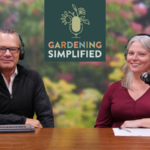
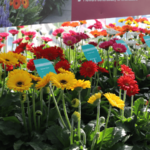




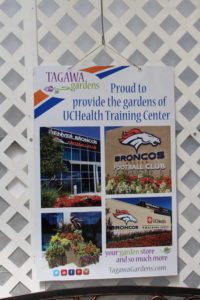

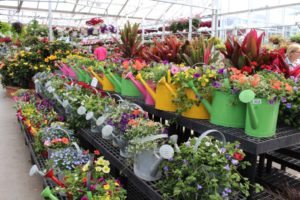
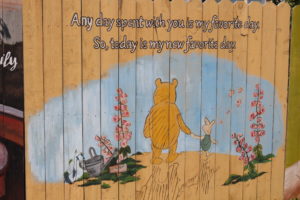
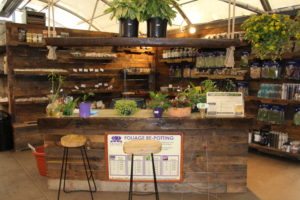
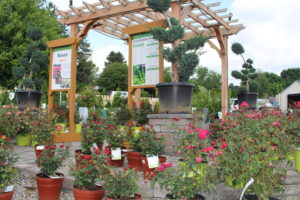
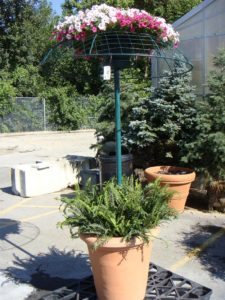
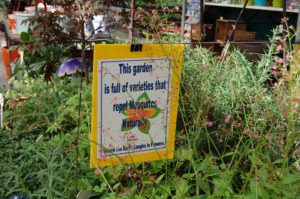
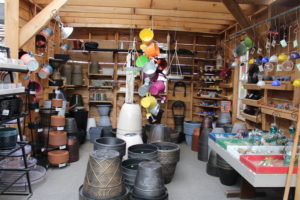
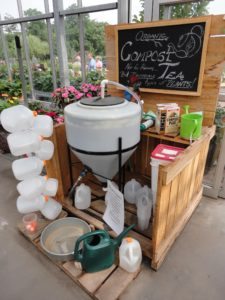

 Videos
Videos





